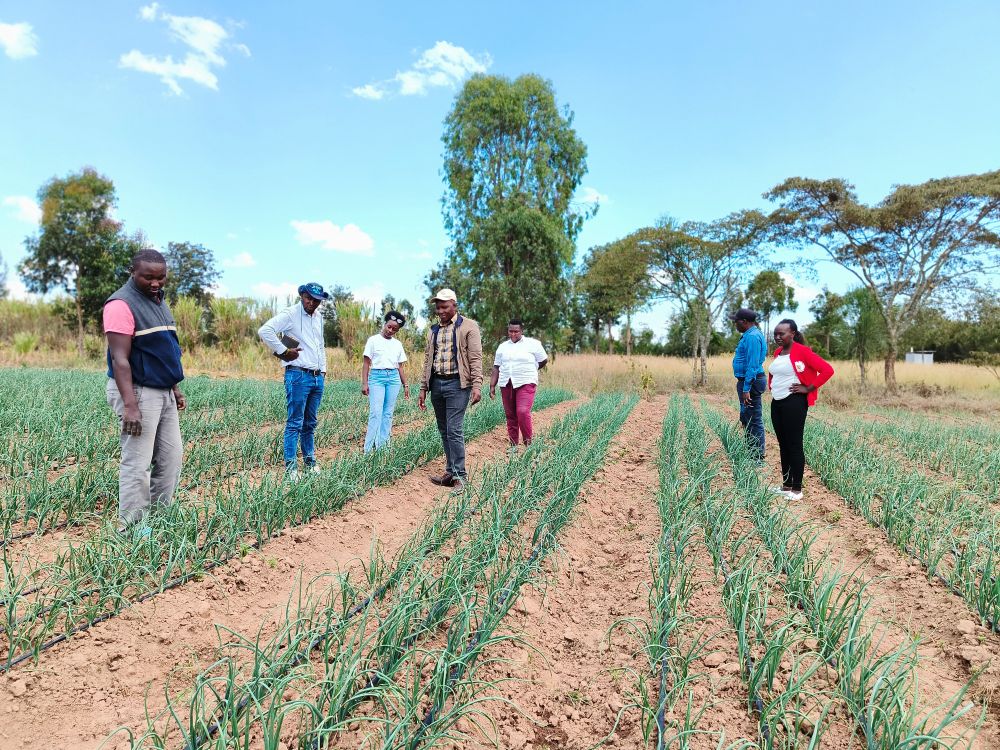5 Low-Cost Ways Smallholder Farmers Can Adapt to Climate Change
Climate change is no longer a distant threat; it’s already affecting smallholder farmers across Kenya and beyond. Unpredictable rainfall, longer dry seasons and increased pest outbreaks are making farming more challenging. But the good news is that adapting doesn’t have to be expensive. With a few simple, low-cost strategies, farmers can boost productivity, protect their crops and build resilience against a changing climate. 1. Improve Soil Health Through Composting and Mulching Healthy soil holds water better, resists erosion, and supports stronger crops. By making compost from farm waste like crop residues, manure, and kitchen scraps, farmers can improve soil fertility without buying chemical fertilizers.
-
Tip: Cover the soil with mulch (like dry leaves or grass) to retain moisture, suppress weeds, and reduce evaporation.
2. Harvest and Store Rainwater With rainfall becoming less predictable, every drop counts. Simple rainwater harvesting systems such as gutters on roofs leading into storage tanks or ponds, can provide water for irrigation during dry spells.
-
Tip: Use stored water efficiently by watering early in the morning or late in the evening to reduce evaporation.
3. Plant Drought-Resistant and Early-Maturing Crops Choosing the right crops is one of the easiest ways to adapt. Drought-tolerant and early-maturing varieties can thrive with less water and still provide a good harvest.
-
Examples: Sorghum, millet, cowpeas, pigeon peas, and certain maize varieties bred for dry conditions.
4. Diversify Crops and Livelihoods Relying on a single crop is risky in uncertain weather conditions. Intercropping and crop rotation not only improve soil fertility but also reduce pest and disease pressure. Diversifying into small livestock (like poultry or goats) or value-added products (like drying vegetables) can also provide income even if one harvest fails.
-
Tip: Mix short-term crops (like vegetables) with long-term ones (like fruit trees) to spread risk.
5. Adopt Simple Water-Saving Irrigation Techniques Irrigation doesn’t have to be expensive. Small-scale systems like drip irrigation kits, clay pot irrigation or gravity-fed systems can make a big difference in water use efficiency.
-
Tip: Combine irrigation with mulching and good soil practices for even better results.
Ways Pioneer CDP is helping smallholder farmers adapt to climate change Pioneer Child Development Programme (PCDP) has been at the frontline in supporting smallholder farmers in Nyeri, Laikipia, and Meru Counties to build resilience and adapt to the changing climate. Through a range of innovative and practical interventions, PCDP is empowering communities to secure their livelihoods and ensure sustainable food production.
-
Water Harvesting and Efficient Irrigation Systems With rainfall patterns becoming increasingly unpredictable, access to water is one of the biggest challenges farmers face. PCDP supports water harvesting initiatives by helping farmers install dam liners to collect and store rainwater for use during dry periods. This ensures a reliable water supply for irrigation and livestock, even in prolonged droughts.
-
Climate Education and Agroecology PCDP equips farmers with vital knowledge on climate change, its impacts, and practical adaptation strategies. Through training sessions, workshops, and field demonstrations, farmers learn how to interpret changing weather patterns, adopt sustainable farming practices, and make informed decisions. It also promotes agroecological practices including crop diversification, use of organic fertilizers, intercropping, and integrated pest management, all of which enhance soil fertility, boost productivity, and strengthen resilience against drought, pests, and other climate-related stresses. Also, Pioneer CDP has played a significant role in introducing innovative techniques such as conical gardening, which allows farmers to maximize limited space, especially in homesteads and peri-urban areas. This approach supports food security, improves household nutrition, and promotes efficient use of water and soil resources; which help enhancing resilience to the impacts of climate change.
-
Promoting Climate-Resilient Crops and Seed SystemsPCDP supports smallholder farmers to transition to drought-resistant and climate-resilient crops that can thrive under changing weather conditions. The organization facilitates households with improved crop varieties and fruit trees such as grafted oranges, pixie oranges, avocados, and macadamia, which are better adapted to dry conditions and have high market value. By diversifying crops and promoting resilient seed systems, PCDP helps farmers secure reliable harvests, improve household nutrition, and increase income even under the pressures of climate change.
-
Access to Renewable Energy Solutions To reduce reliance on fossil fuels and promote sustainable farming, PCDP creates awareness among farmers on the use and benefits of renewable energy technologies such as solar- powered water pumps and solar dryers. This helps inform communities about the availability of these green technologies and how they can contribute to reducing carbon emissions, lowering operational costs, and making smallholder farming more profitable and climate-friendly


Leave A Comment
All fields marked with an asterisk (*) are required